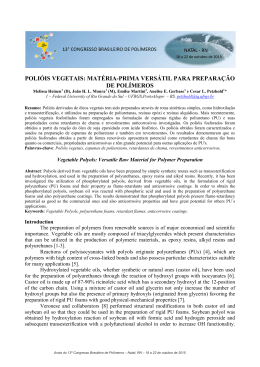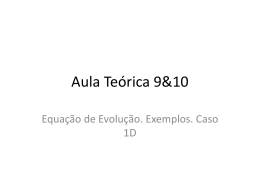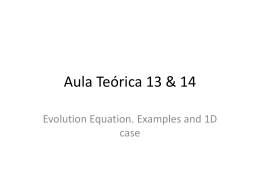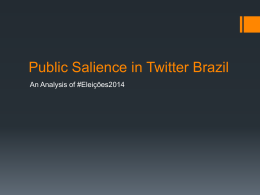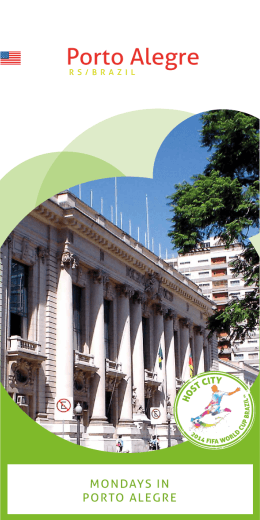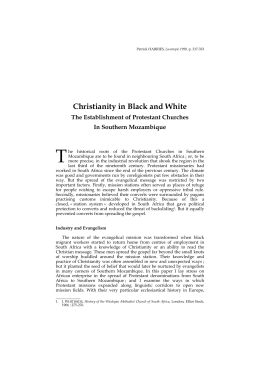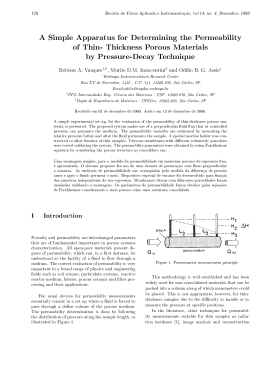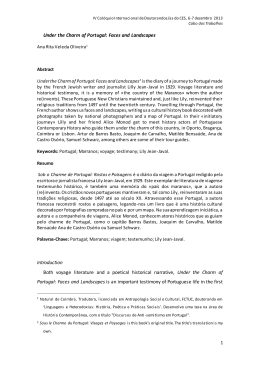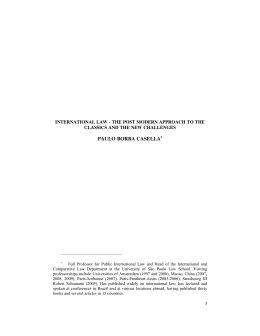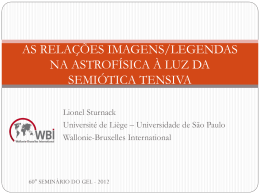JCOM 2 (1), March 2003 The crisis of the “Public Understanding of Science” in Great Britain Nico Pitrelli Master’s Degree Course in Scientific Communication – ISAS – Trieste – Italy Introduction In a brief article published by Science1 last October, British scientists stated that the expression “Public Understanding of Science”(PUS), which was traditionally employed in Anglosaxon societies to refer to the issue of the relationship between science, technology and society, is out-of-date. It should be replaced by “Public Engagement with Science and Technology” (PEST), a new acronym that clearly invites to reconceptualise the relationship between science and the public. The new approach involves the engagement of the public – or rather the publics – of science, through dialogue, in particular through an open and equal-to-equal discussion between scientists and non-experts that would enable non-experts to become the actual protagonists in the scientific decisions producing social effects. It is not just a matter of terminology. The shift from merely promoting the understanding of science – as indicated by PUS – to emphasising the need for public engagement is seen as necessary to obtain public confidence in science. Indeed, there is a general perception that public opinion is increasingly losing confidence in science. However, the initiative of the British researchers does not stand alone. In the last few years politicians, scientists, scholars and media operators in the UK have been insisting 1 “From PUS to PEST”, Science, vol. 298, 4th October 2002, p.49 1 on revising the role of the public in PUS communication theories and practice2,3,4,5,6,7. Therefore, by their proposal, British scientists voice the decline of what, in the last decades, has been the most widespread interpretation model of the relationship between science and the public in the world. Moreover, the definite position taken up by the British scientific community is of public interest. Firstly, because Great Britain has one of the longest histories of promoting scientific culture. Secondly, because – as it is commonly acknowledged – the renewed interest in the relationship between science and the public, and public understanding of science was triggered in Europe in 1985 by the publication of a Royal Society document, known as the Bodmer Report8. This report was named after Sir Walter Bodmer, who was the chair of a working party made up of scientists, politicians, sociologists and journalists, but which did not include any citizen representative. With the publication of the Bodmer Report, PUS was institutionalized and, after 20 years, it became a label employed by the Governments of all industrialised countries in the programmes for the communication of science to the general public. From PUS to PEST British researchers maintain that the acronym PUS has become a synonym of distance between scientists and the public and that there may be a paternalist approach behind it9. According to these researchers, this leads to the progressive estrangement, distrust, or even hostility of the public towards science making it, as a consequence, necessary to move to PEST. Proving the urgent feeling for such a shift, in September 2002 the Office of Science and Technology – an important British scientific institution – and the Research Councils established a series of guidelines for science communicators. Their suggestions explain how to understand and attract the audience and how to identify the 2 Millar, B., “How to make science loveable”, Daily Telegraph, 29th March 2000, p.6 “Not just an optional add-on”, Science & Public Affairs, June 2000, p.6 4 “To buy or not to buy”, Guardian, August 2000, p. 14 5 “Adding a little showbiz”, Science & Public Affairs, October 2000, pp.22-23 6 Kass, G., “Open channels: public dialogue in science and technology”, London: Parliamentary Office of Science and Technology, 2001 3 7 Briggs P., “A recipe for dialogue”, Science & Public Affairs, June 2001, p. 16-17 8 Bodmer W., “The Public Understanding of Science”, London: Royal Society, 1985 “Scientists prepare to experiment with public opinion”, Financial Times, 17th September 2002, p. 6 9 2 proper strategies for dialogue promotion. Several ways of engaging the public in decisions on research and new technologies have been devised, along with practical experiments, including local and national consultation exercises, focus groups and consensus conferences, in which a well-defined but non-expert group of citizens gauge new techniques and scientific issues. A review of the dialogue-promoting activities that have been identified is presented in “Science and Society” 10, a House of Lords report published in Britain in March 2000. According to a number of researchers, it was this report that has led the British PUS to an unavoidable crossroads11, thereby marking the end of an historical cycle. The Bodmer report had had the merit of raising the issue of the relationship between science and ordinary people and that of legitimising science communication. “Science and Society”, on the other hand, methodically emphasized the necessity of dialogue between science and the public. The debate on the meaning of this shift is still open, but the new message is clear: citizens who wish to communicate their opinions on scientific issues – especially issues affecting their own lives – need more opportunities and interaction. The evolution of PUS crisis The need for the House of Lords to publish the “Science and Society” report stemmed from a matter of fact: the efforts aimed at promoting scientific literacy as well as the understanding and appreciation of science failed in Britain after just over a decade12. The British population – at least with respect to PUS promoters’expectations – is still scarcely scientifically-literate and many of them took an aversion to scientific research rather than a liking. However, the signals and symptoms of this failure did not appear all of a sudden. Moreover, the British PUS, far from being a monolithic structure, changed several times in its 20 years of life. As mentioned earlier, the history of PUS13 as an institution began in 1985, when the Royal Society set up a working party to look at the nature and extent of public 10 “Science and Society”, House of Lords, London: Her Majesty’s Stationary Office, 2000 Miller, S., “Public understanding of science at the crossroads”, Public Understanding of Science 10 (2001), pp. 115120 12 Miller, S., op. cit. 11 13 A brief history of PUS in Britain is available on the web, address: http://www.dti.gov.uk/ost/ostbusiness/puset/ history.htm 3 understanding of science in the UK as well as PUS delivery mechanisms. Besides the “Bodmer Report”, one of the outcomes was the establishment, by the Royal Society, the Royal Institution and the British Association for the Advancement of Science (the three major British scientific institutions), of a PUS committee known as CoPUS. The working party gave life to a series of large-scale communication activities aimed at reducing distance between science and society. With the CoPUS, what was later called the “PUS Industry” was established and could develop. After the “Bodmer Report” and before “the Science and Society” report, the British government published another important document entitled “Realising our Potential” 14, which led to the establishment of the Office of Science and Technology (OST). In recent years politicians and the scientific community have become increasingly aware of the need to foster public engagement, as stated by the “Science and Society” report and by another British government document entitled “Excellence and Opportunity – a science and innovation policy for the 21st century” 15. These fundamental stages of PUS history coincided with several crisis moments in the history of the relationship between science and the public in Great Britain. The BSE debacle marked one of these moments, since many PUS assumptions and expectations proved surprisingly insufficient to deal with such a complex situation16. The causes of PUS crisis The reference frame against which PUS evaluated its own changes was offered by the Bodmer Report. According to it, the reasons for promoting science communication were both of individual and collective n ature. PUS p romoters maintained that national prosperity depended on science and technology, whose impact in society and everyday life was increasing. Therefore, improvements on science communication would enable citizens to take conscious decisions and appreciate science. Some of the concepts characterising PUS promotion rhetoric in the mid 1980s could also be found at the beginning of American tradition in science communication. 14 “Realising Our Potential: A strategy for Science, Engineering and Technology” , London: Her Majesty’s Stationary, Office, 1993 15 See http://www.dti.gov.uk/ost/aboutost/dtiwhite/ 16 Turney, J., “Understanding and engagement: the changing face of science and society”, Wellcome News, 32, Q3 2002, pp. 6-7 4 One of these concepts was that increasing public understanding of science leads to improve democracy, culture and human potential, as well as to create a modern, industrial and self-critical society17. It was explicitly stated that science itself would also benefit from such a change, since it would receive from public favour new impetus and more substantial funding. Accordingly, the origins of the British PUS were also characterised by previously existing concepts. The advocates of PUS maintain that scientific knowledge is certain and fixed – which means that science is a privileged perspective on the world – and that the public is ignorant of science. As a consequence, public understanding of science may be improved through methods that are based on the “top-down model” or “deficit model” of science communication. According to this model, the flow of knowledge between science and the public moves one-way only. The public, seen as an anonymous and homogeneous entity, has to passively acquire the “pure” knowledge produced by the scientific community. It is the medias that, in most cases, have the task of popularising scientific discoveries and processes. For this reason, scientific communication inevitably becomes somewhat approximate, is too simplified and loses some information. Communication activities, therefore, do not go by the needs or the competence of the publics, but on the education and the cognitive abilities they are alleged to lack. 18 What is important is that precise views on science, the public and the relationship between science and society bring about precise communication models. The relationship between the scientific community and the public may be studied at two levels. The first level concerns “mediated science”, namely “the ways scientific news is produced, formulated and perceived by the public”19 The second level concerns the understanding of science by the public. These two levels often overlap, since many authors use the “deficit model” of public communication of science as a synonym of PUS. The two levels overlapped particularly at the beginning of the PUS movement. Over the years PUS was criticized, which lead to a change in the communication models originating from it. The “engagement model” is the most recent of them. The passage from the deficit model to the engagement model was gradual and uneven and it was characterized by a wide range of studies. 17 Tobey, R., “The american ideology of national science”, Pittsburgh, PA: University of Pittsburgh Press, 1971 18 19 Borgna P., Immagini pubbliche della scienza, Edizioni di Comunità, Torino, 2001, p. 7 5 The critics of the top-down model20 pointed out, for example, that it was based more on the interests of science than those of the public. Moreover, they pointed out that science cannot be considered as a coherent body of knowledge. Scientists themselves, after all, do not all agree on the nature of science and its epistemological function21. A different perspective is offered by the “rational choice” model22. It developed from the following question: “In a culture where science is so pervasive, what do people need to know to be good citizens?”. In the discussion on PUS, the last important approach is the contextual one, which tries to answer the following question: “What do people want to know about science in certain circumstances?” 23. The models we have just mentioned – the top-down, the rational and the contextual models – prove that the needs of the public have long been taken into account by PUS, whose crisis is not, however, only due to the role played by nonexperts. PUS deconstruction The PUS acronym has been separated into all its components. Besides considering the public, scholars, for example, have critically wondered what it means to understand science, to what extent the understanding of science overlaps with scientific literacy and how true it is that a better learning of science – once the concept of science itself has been defined – leads to the appreciation of scientific research. More generally, discussions focused on the meaning of the words “public”, “understanding” and “science”. Scholars, however, did not reach an agreement on what the public (whoever it may be) should, might or would like to understand (whatever “to understand” means) about science (however it is defined) 24. Several are the metascientific disciplines that deconstructed PUS. On the one hand, sociology, the history of science and the philosophy of science showed that, in the 20 See Gregory J. and Miller S., Science in public: Communication, culture and credibility, New York: Plenum, 1998 and Trench, B., “Science reporting in Europe: From comparison to critique”. The latter is an article which was presented at the Public Communication of Science and Technology Conference, Berlin, September 1998 21 Ziman, J., “Not knowing, needing to know, and wanting to know”. In When science meets the public, edited by B. V. Lewenstein, 13-20. Washington, DC: American Association for the Advancement of Science. 22 Ziman, J., op. cit. 23 Ziman, J., op. cit. 24 Gregory J. and Miller S., Science in public: Communication, culture and credibility, p. 8, New York: Plenum, 1998 6 last few decades, scientific establishment has turned into a social institution. According to these disciplines, the scientific establishment has also been increasingly interacting with other social institutions, in ways that are different from those of the past. On the other hand, there is pedagogy, mass communication theory and cognitive psychology. They discovered that the public is a heterogeneous and diversified group of people with precise interests, and that this group is far from being passive and unable to use, reject and reinterpret incoming information. Constructivist criticism, which dealt with the role of the public of science within the scope of sociology of science, assumed great importance from the 1960s till the end of the 1970s25 but, according to some authors, the PUS movement made the mistake of paying little attention to it26. However, the “Optimising Public Understanding of Science” programmes are apparently bearing witness to a reversal of this trend. These programmes, for instance, explicitly consider the “lay knowledge” of non-experts as an alternative to that of the scientific community and assume that, in some cases, it can be very effective27. Moreover, Brian Wynne and Alan Irwin28 revealed the importance of social context and the legitimacy of “local” knowledge, which is an important basis for the use of science by members of the public. Nevertheless, the public plays an important role in the PUS crisis. As mentioned earlier, the public was drawn into the matter both by the disciplines traditionally relating to PUS studies and by those that seem to have little to do with PUS. Some authors maintain that PUS should be changed but without modifying its general outline, others believe it is necessary to shift to a model based on Constructivism involving public engagement in science. However, it is no use here joining the dispute between them. What is more convenient to underline is that the science public, or rather the science publics, are now the subject of multidisciplinary research with perspectives which have apparently yet to be integrated – for the moment – into a coherent view. It must also be said that attention to the public is not an exclusive feature of the British PUS. American tradition, especially the Scientific Literacy Model (SLM), had already raised the issue of the relationship between science and the public between the 1970s and the 1980s29. Even though a part of PUS literature does not accept to be 25 For an overview of this matter see Borgna P, op. cit.. Borgna P., p. 33, op. cit. 27 See http://www.univie.ac.at/Wissenschaftstheorie/opus/mproject.html 28 Wynne B., “The public understanding of science”, in Handbook of Science and Technology Studies, ed. Shiela Jasanoff, Gerard Markle, James C. Petersen, and Trevor Pinch, Thousands Oaks, CA: Sage, 1995 and Irwin A., “Citizen Science: A Study of People, Expertise and Sustainable Development”, London: Routledge, 1995 29 Logan A. R., “Science Mass Communication. Its Conceptual History”, Science Communication, Vol. 23, Dicembre 2001, pp. 135-163 26 7 considered as similar to SLM30, it is SLM that developed the systems to gauge how much non-experts know about science, how much they learn, for instance, from exposure to the media (cognitive level) or how scientifically inclined they are (perceptive level). The SLM researches stemmed from the need to verify that the American programmes for science communication were successful. As in Britain, also in the USA scientific literacy has decreased and indifference or even hostility to science have increased31. As in Britain with PUS proposals, some scholars like Robert Logan present the interactive models of science communication as those that should replace SLM or combine with it32. Furthermore, a call similar to that of British scientists was recently made also by the American Association for the Advancement of Science33. Conclusion The call for public engagement by British scientists marks a crucial point of the crisis PUS has been undergoing for several years. Even though criticism is levelled at various aspects of PUS presuppositions and goals, its main target is the role of the public. Promoting dialogue, as well as interaction, bilateral engagement and debate in scientific communication and in the science-society relationship is judged to be the way to overcome the PUS crisis. However, this solution is not a new idea for the public communication of scientific research results. Furthermore, criticism by the various disciplines dealing with the science-society relationship is not a unified whole. On the contrary, it seems there is not, at the moment, one interpretation of the crisis. For this reason one wonders if, perhaps, the difficulties in scientific communication may not be explained only by gauging the extent of the information exchange between science and the public and that of their mutual legitimation. Nevertheless, what PUS supporters and their opponents aim at – both in form (terminology) and in substance – is to re-establish the contact science has lost with the public. In addition to this approach – sacred even only because of the extent and diffusion of PUS – another research hypothesis should be considered. This hypothesis lies in the assumption that the scientific communication scene is more complex than 30 Borgna P., op. cit., p. 19 Logan A. R., op. cit. 32 Logan A. R., op. cit. 33 Leshner I. A., “Public Engagement with Science”, vol. 299, 14th February 2003, pp. 997-999 31 8 what has been assumed until now, and that the scientific communities – however they interact with the public – are not the only protagonists. Science may be considered as a natural genus34 we come across in our daily lives, whether we can define or even recognise it or not. If we accept not only that science in society is all-pervasive, but also that it is communicated in other contexts than academia, then we can assume that scientific communication occurs at a horizontal level, too. This means that there are publics that constantly exchange scientific information without being explicitly aware of it and without directly interacting with the scientific world. We believe it is necessary to analyse this kind of communication to reconstruct the context of scientific communication as a whole. It is necessary to understand if the horizontal level of science communication is important, but without demonizing it or giving it the same epistemological meaning as the scientific level proper. We must realize that the horizontal level exists and contributes to shaping the general mental model of science. We should consider that the science publics are made up of individuals that not only receive information on science but also give information on science. This would enable us to move away from the limitations of a utilitarian approach, which still seems to characterize the attempts to change PUS. Furthermore, this new approach might prove useful to verify the theory that science communication bears a distinctive cultural value as science itself. Translated by Francesca Mazziotti, Scuola Superiore di Lingue Moderne per Interpreti e Traduttori, Trieste, Italy 34 Ziman, J., La vera scienza, Edizioni Dedalo, Bari 2002 9
Download
